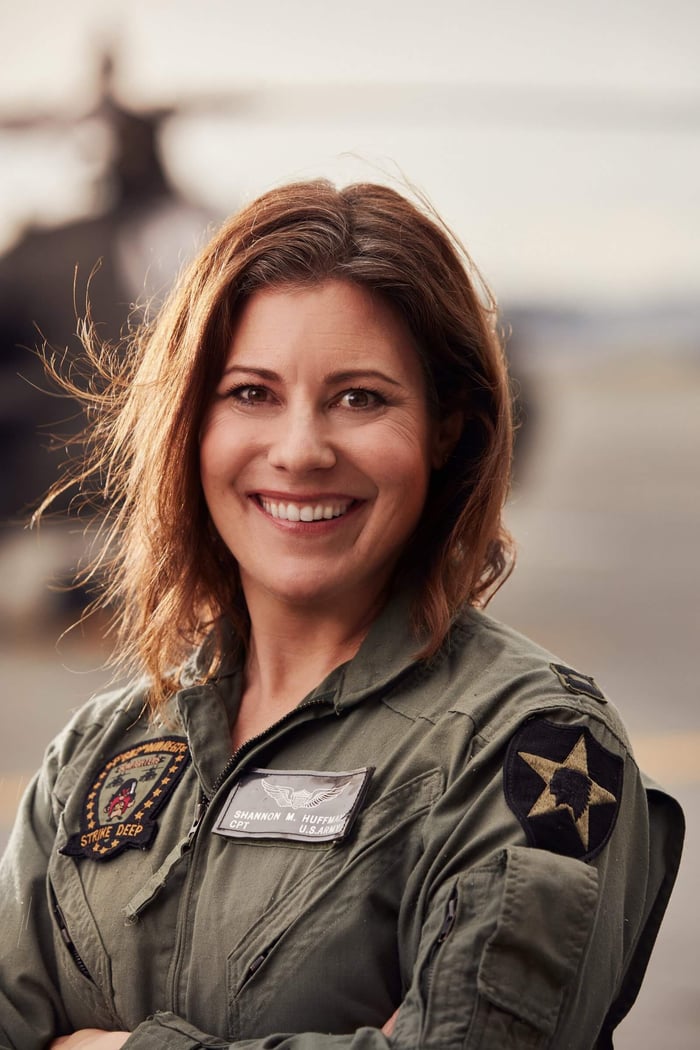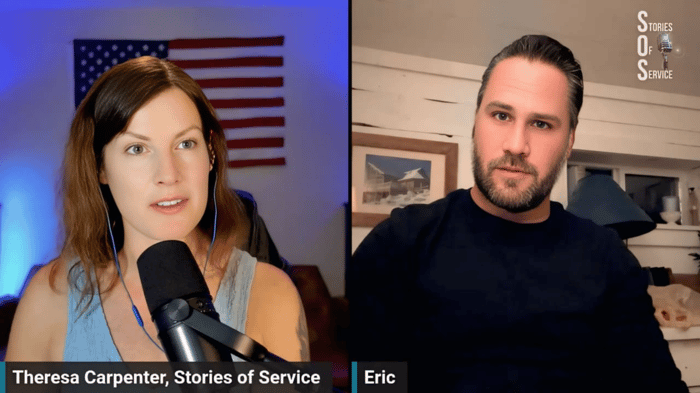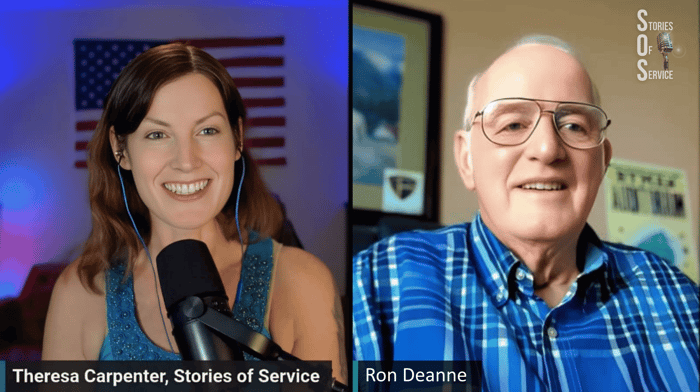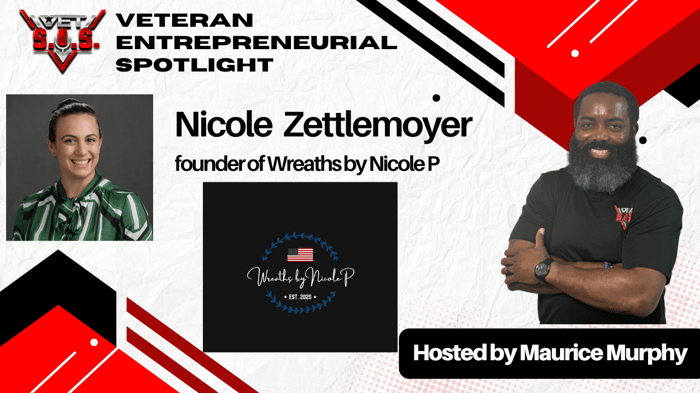Grit Leadership: How Shannon Huffman Polson Turns Adversity into Strength
Leadership in any arena — military, corporate, or personal — requires more than skill. It requires grit leadership: the ability to persevere, to own your story, and to lead with courage when the stakes are highest. Few people embody this better than Shannon Huffman Polson, one of the first women to fly the U.S. Army’s Apache helicopter, bestselling author of The Grit Factor, and founder of The Grit Institute.
In a recent episode of The Scoop on the VET S.O.S. Podcast Network, Shannon joined host Kingsley to share her journey from Alaska to the Apache cockpit, and from military leadership to building frameworks that help others succeed. Their conversation highlights why leaders should having grit matters — not just in the military, but in every transition and every challenge life brings.
Early Lessons in Grit Leadership
 Shannon Huffman Polson
Shannon Huffman PolsonThrough ROTC at Duke University and service with the National Guard, Shannon pursued her passion for flying. But when she first sought an aviation assignment, she was told bluntly that she would never fly an attack aircraft. At the time, the Combat Exclusion Clause barred women from flying in combat roles.
Yet grit is about more than accepting barriers — it’s about breaking them. When Congress lifted the exclusion, Shannon graduated as an honor graduate from flight school and secured her place flying the Apache helicopter.
Arriving at her unit, she faced another challenge: being the only woman among 120 pilots. Instead of being deterred, she chose grit leadership by focusing on the mission, exceeding standards, and proving her value through performance.
The Grit Triad: A Framework for Grit Leadership
 Shannon’s military experiences shaped her book The Grit Factor and the Grit Triad framework she now teaches through The Grit Institute. This model outlines three stages of grit leadership:
Shannon’s military experiences shaped her book The Grit Factor and the Grit Triad framework she now teaches through The Grit Institute. This model outlines three stages of grit leadership:
Commit – Own your story and connect with your core purpose.
Learn – Engage deeply in the present, build strong teams, and practice active listening.
Launch – Face the future with audacity, adaptability, and authenticity.
Surrounding all three stages is mindset — the choice to maintain grounded optimism and resilience. According to Shannon, having grit and being a leader is not something you are born with; it’s a choice you make daily.
Grit Is a Choice, Not a Trait
One of Shannon’s most powerful messages is that grit leadership is a decision. “Grit is not a gift. It’s a decision you make every single day,” she explains.
This philosophy applies not only to combat aviation but also to veterans transitioning into civilian life and leaders in any profession. Having grit means showing up consistently, committing to something bigger than yourself, and refusing to give up when challenges mount.
Host Kingsley reflected on this during their conversation, sharing his personal health journey. For him, grit leadership was about confronting dark days with determination and owning his story so that others could be inspired. Shannon affirmed this principle: before you can lead others, you must first lead yourself with honesty and courage.
Reclaiming Identity Through Grit Leadership
A recurring theme in Shannon’s work is the idea of reclaiming your story. For many veterans, identity feels tied to the uniform. When service ends, it can feel like losing purpose.
But grit teaches that leaving the uniform doesn’t mean leaving the mission — it means expanding it. Shannon encourages veterans to reconnect with the passions and values they had before service and integrate them with the skills and discipline gained in uniform.
Kingsley echoed this by sharing how he had to rediscover the “pre-military Kings” and bring those qualities forward into his life today. Reclaiming identity through grit leadership is not about erasing the past but about weaving together every chapter into a stronger, more complete self.
The Emotional Core of Transition
Transition is both tactical and emotional. Tactical steps like updating resumes or applying for jobs are necessary, but grit leadership addresses the deeper emotional challenges. Many struggles — whether anxiety, burnout, or self-doubt — stem from unresolved identity questions or unaddressed fears.
Shannon uses tools like the Five Whys exercise to help leaders uncover their core values. By repeatedly asking “why,” individuals move past surface answers to discover the deeper motivations that anchor their lives. This process is critical for our leadership because it aligns action with purpose, giving resilience real direction.
Leadership as a Sacred Trust
Another pillar of Shannon’s philosophy is that leadership itself is a sacred trust. This concept applies equally to leading others and leading oneself.
She recalls advice from her first battalion commander: “The most important job you have with any increased power is the increased responsibility to take care of your people.” For Shannon, grit leadership means embracing this responsibility while also practicing self-leadership.
Every person — whether a veteran, parent, manager, or community member — has influence. Having grit and being a leader requires treating that influence with integrity, compassion, and courage.
The Tools of Grit Leadership
To make grit leadership practical, Shannon founded The Grit Institute, which provides training, coaching, and resources. Her book The Grit Factor offers exercises at the end of each chapter to help readers put concepts into practice. She also provides a free GRIT Manifesto download to remind people that grit is a daily choice.
These tools give leaders — whether in business, education, or personal life — the structure to build resilience and lead effectively. Exercises like creating a personal journey line, identifying mentors, or committing to daily mindset practices transform abstract ideas into tangible habits.
A Call to Embrace Grit Leadership
The conversation between Kingsley and Shannon is more than a story of military service or personal resilience. It is a call to embrace your grit in every part of life.
For veterans navigating transition, grit provides a way to reclaim purpose and contribute meaningfully in new arenas. For corporate leaders, it offers a model of resilience and authenticity that inspires teams. For anyone facing change, grit shows that mindset, purpose, and courage can turn adversity into opportunity.
As Shannon powerfully reminded listeners, “Leadership of yourself is a sacred trust. Leadership of others is a sacred trust. Your mission is not over. Your purpose is not done. It’s just beginning.”
Final Thoughts
Grit leadership is about choosing to rise again and again. It’s about reclaiming your story, committing to your purpose, and leading with courage. Shannon Huffman Polson’s journey — from Apache pilot to bestselling author and founder of The Grit Institute — is proof that grit is not only possible but essential in today’s world.
Her message is clear: own your story, choose grit daily, and lead with purpose. Whether in the cockpit, the boardroom, or everyday life, grit leadership is the key to turning challenges into strength.





